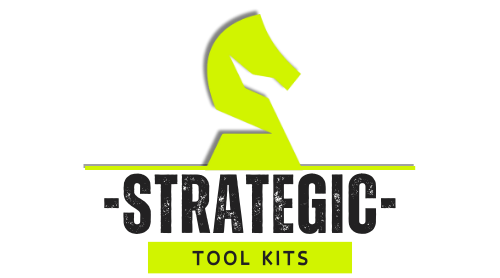When a brand is still in its growth phase, it doesn’t have the luxury of decades of reputation or global name recognition. Customers aren’t yet emotionally invested, investors are watching closely, and competitors seem endless. In that landscape, trust becomes your only real currency.
You don’t need a huge budget to earn it; you need consistency, transparency, and proof that your business delivers what it promises. Whether you’re a small e-commerce startup or a tech company navigating your first funding round, building trust means showing customers you are reliable before you are famous.
That process is slow, intentional, and deeply human. And it’s what separates brands that fade after their launch buzz from those that earn loyalty that lasts.
Step 1: Be Transparent, Even When It’s Uncomfortable

Nothing breaks early trust faster than hidden terms, misleading claims, or fine print. In the early stage, your customers are evaluating whether they can believe you, not just whether they like your product.
That means:
- Publishing honest information about pricing, shipping, or data usage.
- Explaining your process clearly, whether you make clothing or build software.
- Owning up to mistakes immediately instead of hiding them.
When customers see a brand admit an error and fix it fast, they become more forgiving, not less. In modern commerce, transparency isn’t a liability; it’s a strategy.
Step 2: Make Customer Service Personal
Automation has its place, but in a small or growing brand, nothing replaces a genuine human response. A customer who gets a thoughtful reply to a problem, or a direct email from a founder, will remember that far longer than any ad campaign.
If you can’t afford a large customer service team yet, do it yourself. Many early-stage founders build their first loyal audience this way, one personal message at a time.
Step 3: Show Proof, Not Promises

Claims mean nothing without verification. In a digital age saturated with marketing talk, customers respond to proof of reliability, not slogans. Use hard evidence wherever possible:
- Share verified reviews or testimonials from early clients.
- Publish real numbers if possible, order counts, satisfaction rates, or growth figures.
- Use video or photos showing your product in real-world conditions.
If you’re a B2B brand, publishing short case studies with measurable outcomes ca n achieve the same effect. Authentic social proof, not polished exaggeration, signals honesty.
Step 4: Align With Recognized Standards
For newer companies, partnering or aligning with credible external institutions accelerates trust dramatically. This can mean certifications, regulatory compliance, or even verified listings with financial or professional platforms.
Recruitment and operational firms like Ned Capital Recruitment often emphasize this same principle; credibility compounds when independent validation exists. For early brands, that could mean working with a respected logistics provider, joining an established marketplace, or earning a sustainability certification.
These affiliations tell your customers, “Others you already trust, trust us too.” That small social signal goes a long way in removing hesitation from first-time buyers.
Step 5: Tell a Real Story
Modern customers, especially younger ones, connect with a story before they connect with data. They want to know why your brand exists, not just what it sells.
A growing company that shares its origin story, the problem it set out to solve, the people behind it, and the risks taken builds relatability. People don’t root for logos; they root for people.
Be authentic, not theatrical. Write in your own voice on your website or social channels. Let your audience see progress, even imperfection. A growing brand that’s candid about its evolution feels more trustworthy than one pretending to be flawless.
Step 6: Protect Customer Data Like a Giant Would
Data breaches have eroded public confidence in technology and e-commerce. A small brand that takes cybersecurity seriously sends a clear message: “We value your trust enough to protect it.”
If you collect any kind of personal information, from emails to payment details, use encryption, comply with GDPR, and communicate your privacy standards clearly.
Transparency about how you store and use customer data builds silent but powerful credibility, especially in early years when skepticism is highest.
Step 7: Consistency Builds Familiarity, and Familiarity Builds Trust

Trust doesn’t come from one big campaign; it grows from repetition. Your tone, your product quality, your delivery times, your refund policies, everything must align.
When customers experience the same reliability three times in a row, they stop comparing you to competitors. That’s the psychological threshold where habit becomes trust.
If you promise delivery in three days, make it happen every time. If your website claims 24-hour support, mean it. Consistency transforms reliability from an exception to an expectation.
Step 8: Turn Early Customers Into Advocates
In the early stage, word of mouth is your strongest marketing engine. When someone chooses you before you are well-known, they are taking a small personal risk, and that deserves recognition.
Reward early adopters with small thank-yous, insider updates, or referral bonuses. Most importantly, listen to their feedback and implement it visibly. When customers see that their opinion genuinely shapes your brand, they stop being clients and start being community members.
This early emotional investment pays long-term dividends: advocacy, repeat sales, and resilience during slow quarters.
Step 9: Educate, Don’t Oversell
View this post on Instagram
Educational content outperforms direct selling because it builds authority. Whether it’s tutorials, behind-the-scenes videos, or guides that help users get the most out of your product, you’re showing expertise before asking for trust.
This strategy transforms you from “someone selling a product” into “someone who knows what they’re talking about.”
Step 10: Deliver Reliability Before Perfection
Many founders obsess over appearing “big”, chasing sleek websites, influencer deals, and expensive packaging. In reality, most customers don’t expect perfection from a growing brand. They expect reliability.
Deliver on your core promise first:
- If you sell a product, make sure it works every time.
- If you offer a service, make sure communication is prompt and clear.
- If you make a mistake, fix it with humility.
Trust grows when customers see that you’re dependable, not flawless.
Conclusion
Building customer trust while your brand is still growing is a slow process, but it’s the most valuable foundation you’ll ever lay. It’s built one reply, one fulfilled order, one honest post at a time.
When you combine transparency, proof, and human responsiveness, you become more than another company fighting for attention; you become a name people remember.

